




ICRANet Newsletter
ICRANet Newsletter
Ottobre 2015 – Gennaio 2016
Ottobre 2015 – Gennaio 2016
SOMMARIO
- Comunicato stampa "Crafoord Prize 2016 awarded to Roy Kerr"
- Pubblicazioni Recenti
- Il nostro concetto di BdHNe nel nuovo film del creatore di Cinema Paradiso, Giuseppe Tornatore
- Collaborazione Scientifica con l'Iran
- Primo Colombia-ICRANet Julio Garavito Armero Meeting
- Primo Sandoval Vallarta Caribbean Meeting
- Nuove discussioni di Tesi di Ph.D e Diplomi
- Nuovi studenti del programma IRAP PhD
- Proceedings recenti
- Comunicato stampa "Crafoord Prize 2016 awarded to Roy Kerr"
- Pubblicazioni Recenti
- Il nostro concetto di BdHNe nel nuovo film del creatore di Cinema Paradiso, Giuseppe Tornatore
- Collaborazione Scientifica con l'Iran
- Primo Colombia-ICRANet Julio Garavito Armero Meeting
- Primo Sandoval Vallarta Caribbean Meeting
- Nuove discussioni di Tesi di Ph.D e Diplomi
- Nuovi studenti del programma IRAP PhD
- Proceedings recenti
Comunicato stampa "Crafoord Prize 2016 awarded to Roy Kerr"

Il professore neozelandese Roy Kerr, matematico e fisico, titolare della Lifshitz Chair all'ICRANet, è stato da poco premiato assieme a Roger Blandford con il Crafoord Prize 2016 "per il suo lavoro fondamentale sui buchi neri rotanti e sulle loro conseguenze in astrofisica".
L'ICRANet è un'organizazzione scientifica internazionale i cui membri sono quattro stati e tre università e centri di ricerca: la Repubblica di Armenia, la Repubblica Federale del Brasile, la Repubblica Italiana, lo Stato della Città del Vaticano, l'Università dell'Arizona (USA), l'Università di Stanford (USA) e l'ICRA.
Il Crafoord Prize premia e incentiva ricercatori in settori scientifici alternativi a quelli tradizionalmente insigniti con i Premi Nobel. Questo prestigioso premio, di circa un milione di euro, viene conferito ogni anno dal Re e dalla Regina di Svezia nel mese di maggio. Dalla sua istituzione nel 1982, solo sei astronomi o astrofisici si sono distinti per il Crafoord Prize.

Roy Kerr, titolare della Yevgeny Mikhajilovic Lifshitz - ICRANet Chair, durante la scuola IRAP PhD a Villa Ratti, Centro ICRANet a Nizza - 2010
Il Prof. Roy Kerr ha scoperto nel 1963 una soluzione esatta delle equazioni della Relatività Generale di Albert Einstein per oggetti rotanti: “Questa soluzione matematica – sottolinea il Direttore dell'ICRANet Prof. Remo Ruffini – ha permesso progressi fondamentali senza precedenti nei campi della fisica, dell'astronomia e dell'astrofisica relativistica: le applicazioni si estendono dal campo della micro-fisica delle particelle elementari, quale la struttura dell'elettrone, all'astrofisica dei buchi neri, che si manifesta alla fine dell'evoluzione di una stella, fino ai processi più energetici dell'Universo, quali i GRBs ed i nuclei galattici attivi, dove buchi neri a maxi-buchi neri, con masse fino a milioni di volte maggiori di quella del Sole, dominano.” E' stato proprio Remo Ruffini, assieme a John Archibald Wheeler, ad usare la soluzione matematica di Kerr introducendola nella descrizione dei processi fisici fondamentali ai quali è stato dato il nome di “Black Holes”, in seguito tradotto in tutte le lingue del mondo (Physics Today, 30, 1971). Da quel momento, la soluzione di Kerr ha permesso illimitati sviluppi scientifici, oggi dovutamente riconosciuti dal Crafoord Prize.
Questi temi sono stati ulteriormente studiati da Blandford e Znajek (MNRAS, 179, 433, 1977) in seguito ad un articolo di Ruffini e Wilson (Phys. Rev. D 12, 2959,1975).
Nel 2006 il Prof. Roy Kerr ha ricevuto il Marcel Grossmann Award (si veda la pagina Wikipedia relativa e il libretto ICRANet sugli MG11 Award) in occasione della conferenza istituzionale ed internazionale per l'astrofisica relativistica che ha luogo ogni tre anni in una nazione diversa.
Il Prof. Roy Kerr ha insegnato nell'ICRANet per l'IRAP PhD, il primo Dottorato internazionale congiunto, formato da sei università europee (tedesche, italiane, svedesi e francesi), istituito dall'ICRANet e coordinato a livello internazionale dall'Università di Nizza "Sophia Antipolis".
La sede dell'ICRANet sarà aperta al pubblico sabato 30 Gennaio, 2016, dalle 10:00 alle 13:00 per una conferenza: il Prof. Roy Kerr interverrà tramite skype.
Pubblicazioni recenti
Neutron-Star–Black-Hole Binaries Produced by Binary-Driven Hypernovae
Chris L. Fryer, F. G. Oliveira, J. A. Rueda, and R. Ruffini
Phys. Rev. Lett. 115, 231102 – Published 4 December 2015
Chris L. Fryer, F. G. Oliveira, J. A. Rueda, and R. Ruffini
Phys. Rev. Lett. 115, 231102 – Published 4 December 2015
It seems that the formation of a stellar mass BH does not occur directly from the collapse of a single massive star but instead it follows a much longer path in a sequence of events marked by a succession of processes of gravitational collapse, and finally leading to the actual birth of a BH: 1) the star of larger mass is evolving on a time scale much shorter in a first process of gravitational collapse, leading to a SN and the formation of a NS; 2) the binary system composed of a NS and a massive star evolves toward a binary system with a shorter and shorter orbital period, until also the second massive star explode in a SN; 3) in this process, a second NS is formed and part of the material expelled by the SN is engulfed in the accretion on the first NS; 4) this accretion can lead the accreting NS to reach its critical mass and form a BH, and during this induced gravitational collapse (IGC) process, a GRB is emitted.

The details of this complex astrophysical process have been studied and developed in a group of astrophysicists, theoretical physicists, and experts in general relativity working with the most advanced numerical computational techniques in the ICRANet Seats.
It was not clear if, after the violent SN explosion with a large loss of mass, the NS (remnant of the SN) and the just born BH could indeed survive as a binary system. From the traditional work on binary systems, it was well known that, if a SN explosion leads to a loss of mass larger than 50% of the initial total mass of the system, this would become unbound leading to the expulsion of the stars in opposite directions. In a paper just published in the prestigious scientific journal "Physical Review Letters" http://journals.aps.org/prl/abstract/10.1103/PhysRevLett.115.231102, Fernanda Gomez Oliveira, a young Brazilian student of the IRAP-PhD in Rome, with Chris Fryer of LANL and her directors of PhD thesis Jorge Rueda and Remo Ruffini, have shown that this result of classical astronomy is actually superseded when relativistic conditions are duly taken into account. They have shown explicitly that in this IGC phenomenon a new binary system composed by a NS and a BH can be formed even in the case when the mass ejected is larger than 50%! One of the most fascinating conclusions is that the orbits of these new binary systems, in view of the emission of gravitational waves, will shrink with time and, in some ten thousand years, will lead to a necessary coalescence of the two objects. This new phenomenon will culminate in the formation a single new BH of approximately five solar masses. These authors predict that a new GRB of extremely short duration will then be emitted and, for this reason, they have baptized such a new system as "ultrashort GRB". This is a totally new possibility predicted by the IGC paradigm: for the first time, in the field of relativistic astrophysics, it is proposed not only the explanation of the GRB phenomena but that a GRB can lead itself to another GRB.
It was not clear if, after the violent SN explosion with a large loss of mass, the NS (remnant of the SN) and the just born BH could indeed survive as a binary system. From the traditional work on binary systems, it was well known that, if a SN explosion leads to a loss of mass larger than 50% of the initial total mass of the system, this would become unbound leading to the expulsion of the stars in opposite directions. In a paper just published in the prestigious scientific journal "Physical Review Letters" http://journals.aps.org/prl/abstract/10.1103/PhysRevLett.115.231102, Fernanda Gomez Oliveira, a young Brazilian student of the IRAP-PhD in Rome, with Chris Fryer of LANL and her directors of PhD thesis Jorge Rueda and Remo Ruffini, have shown that this result of classical astronomy is actually superseded when relativistic conditions are duly taken into account. They have shown explicitly that in this IGC phenomenon a new binary system composed by a NS and a BH can be formed even in the case when the mass ejected is larger than 50%! One of the most fascinating conclusions is that the orbits of these new binary systems, in view of the emission of gravitational waves, will shrink with time and, in some ten thousand years, will lead to a necessary coalescence of the two objects. This new phenomenon will culminate in the formation a single new BH of approximately five solar masses. These authors predict that a new GRB of extremely short duration will then be emitted and, for this reason, they have baptized such a new system as "ultrashort GRB". This is a totally new possibility predicted by the IGC paradigm: for the first time, in the field of relativistic astrophysics, it is proposed not only the explanation of the GRB phenomena but that a GRB can lead itself to another GRB.
Il nostro concetto di BdHNe nel nuovo film del creatore di Cinema Paradiso, Giuseppe Tornatore

Il concetto di sistemi quali "Supernovae, Hypernovae e Binary driven Hypernovae", quest'ultimo introdotto per la prima volta da Remo Ruffini all'ICRANet (e naturalmente abbreviato in BdHNe), inizia nel nuovissimo film di Giuseppe Tornatore, il creatore del famoso classico "Cinema Paradiso", vincitore di un Oscar.
Giuseppe Tornatore, il famoso regista e sceneggiatore italiano che ha scritto e diretto "Cinema Paradiso" e amico del Prof. Remo Ruffini, ha diretto recentemente un film sull'astrofisica e sull'amore intitolato "La Corrispondenza", nel quale il Prof. Ruffini è stato il consulente scientifico. Il film parla di una giovane dottoranda in astrofisica (Olga Kurylenko) e della sua relazione con un professore di astrofisica più anziano (Jeremy Irons). Il film termina con la presentazione della tesi di dottorato della studentessa intitolata "Supernovae, Hypernovae and Binary driven Hypernovae".
Giuseppe Tornatore, il famoso regista e sceneggiatore italiano che ha scritto e diretto "Cinema Paradiso" e amico del Prof. Remo Ruffini, ha diretto recentemente un film sull'astrofisica e sull'amore intitolato "La Corrispondenza", nel quale il Prof. Ruffini è stato il consulente scientifico. Il film parla di una giovane dottoranda in astrofisica (Olga Kurylenko) e della sua relazione con un professore di astrofisica più anziano (Jeremy Irons). Il film termina con la presentazione della tesi di dottorato della studentessa intitolata "Supernovae, Hypernovae and Binary driven Hypernovae".

Asiago telescope
BdHN (al singolare) è un termine che descrive l'evento combinato gamma ray burst-supernova (GRB-SN), i quali venivano precedentemente considerati come due fenomeni separati. Il concetto ed il nome BdHNe sono stati introdotti per la prima volta in astrofisica dal Prof. Ruffini e dal suo gruppo, si veda https://en.wikipedia.org/wiki/ICRANet#Scientific_research_at_ICRANet. Per maggiori informazioni tecniche e possibile vedere ApJ Letters 793, 36 (2014) ed anche A&A 565, L10 (2014). Come è possibile vedere nelle notizie precedenti, il termine "Binary Driven Hypernova" è apparso per la prima volta nel titolo di un articolo del più prestigioso giornale di fisica "Physical Review Letters", articolo scritto da Ruffini e dai suoi collaboratori, si veda http://journals.aps.org/prl/abstract/10.1103/PhysRevLett.115.231102.

Giuseppe Tornatore, Olga Kurylenko e Jeremy Irons
Collaborazione scientifica con l'Iran
Studenti di PhD in visita
Il ministero dell'istruzione del governo iraniano offre un supporto finanziario di sei mesi ai dottorandi iraniani in visita negli istituti scientifici stranieri, allo scopo di fornire loro la possibilità di ricevere salda formazione ed esperienza in fisica e astrofisica, così come di stabilire contatti scientifici con i principali gruppi scientifici del mondo. L'ICRANet ospita alcuni studenti iraniani, i quali partecipano alle scuole di PhD ed alle conferenze scientifiche organizzate e sovvenzionate dall'ICRANet. Dal 2011 ci sono stati 7 studenti iraniani in visita al centro ICRANet di Pescara.
Il ministero dell'istruzione del governo iraniano offre un supporto finanziario di sei mesi ai dottorandi iraniani in visita negli istituti scientifici stranieri, allo scopo di fornire loro la possibilità di ricevere salda formazione ed esperienza in fisica e astrofisica, così come di stabilire contatti scientifici con i principali gruppi scientifici del mondo. L'ICRANet ospita alcuni studenti iraniani, i quali partecipano alle scuole di PhD ed alle conferenze scientifiche organizzate e sovvenzionate dall'ICRANet. Dal 2011 ci sono stati 7 studenti iraniani in visita al centro ICRANet di Pescara.
 |
 |
 |
 |
| Iman Motie | Rohollah Mohammadi | Eshan Bavarsad | Rahim Moradi |
La maggior parte degli studenti, Eshan Bavarsad, Rohollah Mohammadi, Iman Motie and Soroush Shakeri (con la moglie studentessa di fisica della materia condensata) proviene dall'Isfahan University of Tecnology. Altri due dottorandi iraniani hanno richiesto di visitare il centro ICRANet di Pescara e le loro domande sono state prese in esame. Rohollah Mohammadi ha ricevuto un sostegno per dall'ICRANet per rimanere sei mesi aggiuntivi.
Altri due dottorandi iraniani dell'Isfahan University of Technology, Saghar Batebi e Seddigheh Tizchang, hanno trascorso sei mesi, da dicembre 2014 a maggio 2015, nel quartier generale dell'ICRANet a Pescara. Durante la loro visita hanno preso conoscenza dell'attività di ricerca dell'ICRANet e approfondito la loro conoscenza dei gamma ray bursts. La loro collaborazione con gli scienziati dell'ICRANet ha portato a due presentazioni all'MG14 meeting nel luglio 2015:
S. Batebi; S. Tizchang; R.Mohammadi; R. Ruffini; S. S. Xue, The generation of circular polarization of GRB, MG14.
S.Tizchang, S.Batebi, R. Mohammadi, R. Ruffini, G. Vereshchagin, S.-S. Xue, Interaction of high energy photons with the background radiation in the universe, MG14.
Altri due dottorandi iraniani dell'Isfahan University of Technology, Saghar Batebi e Seddigheh Tizchang, hanno trascorso sei mesi, da dicembre 2014 a maggio 2015, nel quartier generale dell'ICRANet a Pescara. Durante la loro visita hanno preso conoscenza dell'attività di ricerca dell'ICRANet e approfondito la loro conoscenza dei gamma ray bursts. La loro collaborazione con gli scienziati dell'ICRANet ha portato a due presentazioni all'MG14 meeting nel luglio 2015:
S. Batebi; S. Tizchang; R.Mohammadi; R. Ruffini; S. S. Xue, The generation of circular polarization of GRB, MG14.
S.Tizchang, S.Batebi, R. Mohammadi, R. Ruffini, G. Vereshchagin, S.-S. Xue, Interaction of high energy photons with the background radiation in the universe, MG14.

Seddigheh Tizchang and Saghar Batebi
Durante la loro permanenza nel centro ICRANet di Pescara tutti questi studenti di dottorato iraniani sono stati coinvolti nello studio e nelle attività di ricerca sulla fisica dei buchi neri e delle stelle di neutroni, dei fenomeni dei gamma ray bursts, dell'opacità dei fotoni e della polarizzazione a causa delle interazioni con la radiazione di fondo cosmica e dei neutrini del fondo cosmico. I loro risultati verranno pubblicati in riviste scientifiche con referaggio. Alcuni di questi studenti continuano la collaborazione scientifica con l'ICRANet anche dopo il loro ritorno in Iran.
Altri due studenti iraniani, Zeinab Khorrami e Rahim Moradi, sono stati ammessi nel 2012 e 2014, rispettivamente, per tre anni come dottorandi del programma IRAP PhD www.icranet.org/irap-phd istituito dall'ICRANet.
Altri due studenti iraniani, Zeinab Khorrami e Rahim Moradi, sono stati ammessi nel 2012 e 2014, rispettivamente, per tre anni come dottorandi del programma IRAP PhD www.icranet.org/irap-phd istituito dall'ICRANet.

Da sinistra a destra:
She-Sheng Xue, Wang Yu, Remo Ruffini, Rahim Moradi, Soroush Shakeri e Razie Pakravan
Pubblicazioni con referaggio con gli studenti iraniani:
J. Khodagholizadeh, R. Mohammadi and S.-S. Xue, "Photon-neutrino scattering and the B-mode spectrum of CMB photons", the Rapid communication section of Physics Review D 90, 091301(R) (2014). R. Mohammadi, I. Motie, and S.-S. Xue, "Circular polarization from linearly-polarized-laser-beam collisions", Phys. Rev. A 89, 062111 (2014). R. Mohammadi and S.-S. Xue, "Laser photons acquire circular polarization by interacting with a Dirac or Majorana neutrino beam or cosmic background", Phys. Lett. B 731 (2014) 272. I. Motie and S.-S. Xue, "High energy neutrino oscillation in discrete space-time", International Journal of Modern Physics A Vol. 27, No. 19 (2012) 1250104. I. Motie and S.-S. Xue, "Euler-Heisenberg Lagrangian and CMB photon circular polarization", European Physics Letter, 100, 17006, (2012).
Professori in visita
J. Khodagholizadeh, R. Mohammadi and S.-S. Xue, "Photon-neutrino scattering and the B-mode spectrum of CMB photons", the Rapid communication section of Physics Review D 90, 091301(R) (2014). R. Mohammadi, I. Motie, and S.-S. Xue, "Circular polarization from linearly-polarized-laser-beam collisions", Phys. Rev. A 89, 062111 (2014). R. Mohammadi and S.-S. Xue, "Laser photons acquire circular polarization by interacting with a Dirac or Majorana neutrino beam or cosmic background", Phys. Lett. B 731 (2014) 272. I. Motie and S.-S. Xue, "High energy neutrino oscillation in discrete space-time", International Journal of Modern Physics A Vol. 27, No. 19 (2012) 1250104. I. Motie and S.-S. Xue, "Euler-Heisenberg Lagrangian and CMB photon circular polarization", European Physics Letter, 100, 17006, (2012).
Professori in visita
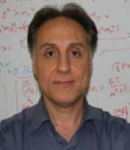 |
Prof. Mansour Haghighat (Isfahan University of Technology, Isfahan, Iran)
Il Prof. Haghighat è uno specialista della fisica delle particelle e si è laureato in Fisica delle Alte Energie presso l'ICTP, Trieste, Italia. E' stato in visita al centro ICRANet di Pescara dal 12 al 26 luglio 2015 ed ha tenuto una presentazione durante il "14th Italo-Korean symposium on Relativistic Astrophysics" con titolo "Generation of Circularly Polarized Radio waves in a background Field". |
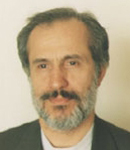 |
Prof. Reza Mansouri (Sharif University of Technology, Teheran, Iran)
Il Prof. Mansouri è stato Vice Ministro della Scienza dal 2001 al 2005 e presidente della Società di Fisica in Iran. E' uno dei fondatori dell'Institute for Studies in Theoretical Physics and Mathematics (IPM). E' il responsabile per l'Iran del telescopio nazionale da 3.4 metri (INO340). Gli è stato conferito il premio Abdus Salam. Ha visitato il centro ICRANet di Pescara nel luglio 2015 ed ha tenuto una presentazione al 14th Italo-Korean symposium on Relativistic Astrophysics con titolo "Do we know what a black hole is? A conceptual refinement". |
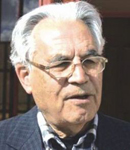 |
Prof. Yousef Sobouti (Institute for Advanced Studies in Basic Sciences, Zanjan, Iran)
Il Prof. Sobouti, ex studente e collaboratore di Subrahmanyan Chandrasekhar (premio Nobel in Fisica) ha continuato la sua attività accademica di rilievo in astrofisica relativistica riconosciuta a livello mondiale ed è stato in contatto da diversi anni con il Prof. Ruffini. |
Primo Colombia-ICRANet Julio Garavito Armero Meeting
Bucaramanga, 23-25 novembre, Bogotá, 26-27 novembre
Bucaramanga, 23-25 novembre, Bogotá, 26-27 novembre
L'1JG meeting ha fatto parte delle celebrazioni da parte dell'ICRANet dell'Anno Internazionale della Luce dell'UNESCO, del Centennale delle Equazioni di Einstein, e del Cinquantennale dell'Astrofisica Relativistica, ed è stato un meeting satellite del Fourteenth Marcel Grossmann meeting (MGXIV), celebrato dal 12 al 18 luglio a Roma.
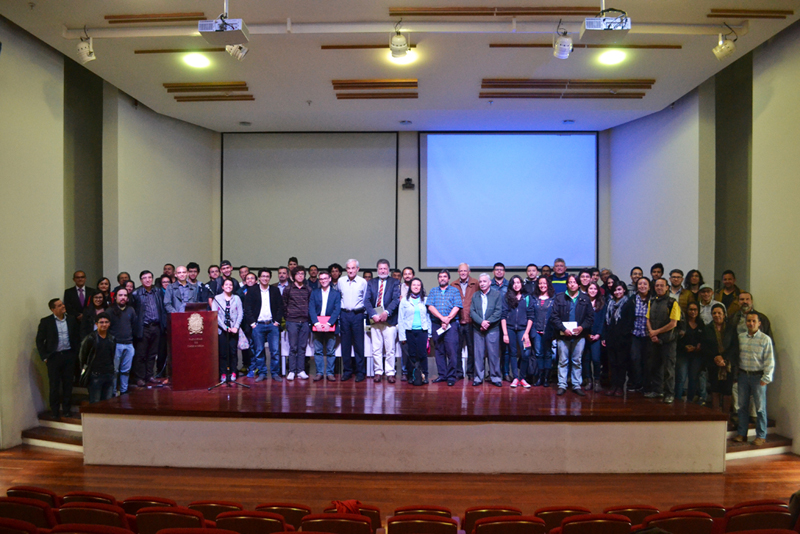
Lo scopo della conferenza è stato quello di riunire i più importanti scienziati, attivi negli aspetti teorici ed osservativi su stelle di neutroni, buchi neri, supernovae, onde gravitazionali, astrofisica delle alte energie e cosmologia, per riesaminare lo stato attuale e per discutere ulteriori sviluppi della gravità e dell'astrofisica relativistica. Nel fare ciò, la conferenza ha raccolto le testimonianze del cammino della teoria della relatività generale di Einstein, a partire da una teoria pura con poche conferme sperimentali e accolta dalla riluttanza di un gran numero di fisici riconosciuti del tempo, tra cui Julio Garavito Armero in Colombia, fino a diventare ai giorni nostri una delle più grandi teorie fisiche di successo confermata dalle osservazioni. Lo stato attuale e le prospettive delle attività dell'ICRANet e delle collaborazioni scientifiche in America Latina, con particolare attenzione alla Colombia, sono stati anch'essi discussi.
L'1JG meeting è stato organizzato in maniera congiunta dall'ICRANet, dall'Universidad Industrial de Santander (UIS), dall'Universidad Nacional de Colombia (UNAL), dall'Universidad de Los Andes (Uniandes), dall'Universidad del Valle (Univalle), dall'Universidad de Antioquia (UdeA), dal Centro Internacional de Física (CIF) of Bogotá e dal Planetario de Bogotá.
L'1JG meeting è stato organizzato in maniera congiunta dall'ICRANet, dall'Universidad Industrial de Santander (UIS), dall'Universidad Nacional de Colombia (UNAL), dall'Universidad de Los Andes (Uniandes), dall'Universidad del Valle (Univalle), dall'Universidad de Antioquia (UdeA), dal Centro Internacional de Física (CIF) of Bogotá e dal Planetario de Bogotá.
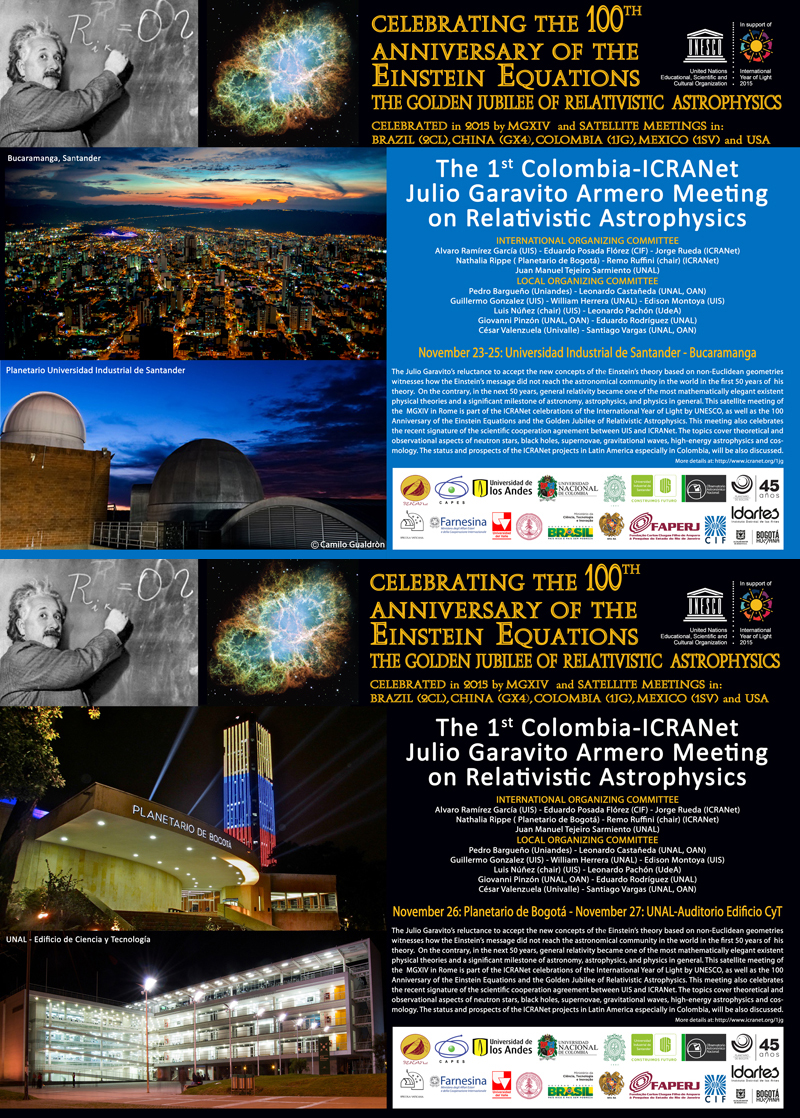
La conferenza è iniziata dal 23 al 25 novembre all'UIS di Bucaramanga. Il primo giorno della conferenza è stato dedicato alle "Soluzioni esatte delle equazioni di Einstein applicate all'astrofisica" e a temi scelti di "Gravità classica e quantistica". Alla fine del primo giorno, il gruppo musicale EMUIS dell'UIS ha eseguito un concerto fantastico interpretando una selezione di brani musicali per mostrare i diversi ritmi di tutte le regioni naturali della Colombia. Durante il secondo giorno della conferenza si sono tenute presentazioni su "Supernovae", "Stelle di neutroni", "Simulazioni numeriche in astrofisica" e "Futuri progetti osservativi per l'astrofisica delle alte energie in America Latina". Questo secondo giorno si è concluso con la Public Lecture intitolata "Relatividad y Sentido Común", del Prof. Luis Herrera Cometta. L'ultimo giorno del meeting di Bucaramanga è stato incentrato su "Nuclei galattici attivi", "Cosmologia", "Struttura a larga scala" e "Soluzioni delle equazioni di Einstein applicate all'astrofisica". Una sessione di Poster è stata attiva durante le pause caffè nei tre giorni della conferenza a Bucaramanga, durante la quale sia studenti universitari che dottorandi hanno avuto l'opportunità di mostrare ed esporre a tutti i partecipanti della conferenza lo stato e i risultati delle loro ricerche.
Il resto della settimana, cioè dal 26 al 27 novembre, l'1JG meeting si è spostato a Bogotá. Il 26 novembre il "Planetario de Bogotá" ha ospitato tre Conferenze pubbliche dei Professori Remo Ruffini, Félix Mirabel e Fernando Izaurieta, oltre alla rappresentazione del pezzo teatrale con mappatura tridimensionale "Albert el triunfo de la imaginación". L'ultimo giorno dell'1JG meeting, il 27 novembre, è stato ospitato dall'UNAL. Hanno avuto luogo presentazioni su Progetti osservativi in America Latina, Astrofisica dei buchi neri, Astrofisica delle alte energie, Struttura a larga scala, Materia Oscura, Stelle di neutroni, Gamma-Ray Bursts e Gravità quantistica. In questi due giorni a Bogotá ha avuto luogo anche una serie di incontri incentrati sulle prospettive di attività e collaborazioni scientifiche tra l'ICRANet e la Colombia, compreso il possibile ingresso della Colombia come Stato Membro dell'ICRANet. Per ulteriori dettagli sulla conferenza, si invita a visitare la pagina web: http://www.icranet.org/1jg/
Il meeting in Colombia è stato descritto nel ResearchItaly resource: Colombia, un convegno per i 100 anni delle equazioni einsteiniane: https://www.researchitaly.it/innovitalia/eventi/colombia-un-convegno-per-i-100-anni-delle-equazioni-einsteniane/
Il resto della settimana, cioè dal 26 al 27 novembre, l'1JG meeting si è spostato a Bogotá. Il 26 novembre il "Planetario de Bogotá" ha ospitato tre Conferenze pubbliche dei Professori Remo Ruffini, Félix Mirabel e Fernando Izaurieta, oltre alla rappresentazione del pezzo teatrale con mappatura tridimensionale "Albert el triunfo de la imaginación". L'ultimo giorno dell'1JG meeting, il 27 novembre, è stato ospitato dall'UNAL. Hanno avuto luogo presentazioni su Progetti osservativi in America Latina, Astrofisica dei buchi neri, Astrofisica delle alte energie, Struttura a larga scala, Materia Oscura, Stelle di neutroni, Gamma-Ray Bursts e Gravità quantistica. In questi due giorni a Bogotá ha avuto luogo anche una serie di incontri incentrati sulle prospettive di attività e collaborazioni scientifiche tra l'ICRANet e la Colombia, compreso il possibile ingresso della Colombia come Stato Membro dell'ICRANet. Per ulteriori dettagli sulla conferenza, si invita a visitare la pagina web: http://www.icranet.org/1jg/
Il meeting in Colombia è stato descritto nel ResearchItaly resource: Colombia, un convegno per i 100 anni delle equazioni einsteiniane: https://www.researchitaly.it/innovitalia/eventi/colombia-un-convegno-per-i-100-anni-delle-equazioni-einsteniane/
Primo Sandoval Vallarta Caribbean Meeting
Città del Messico (Messico) – 30 novembre – 3 dicembre, 2015
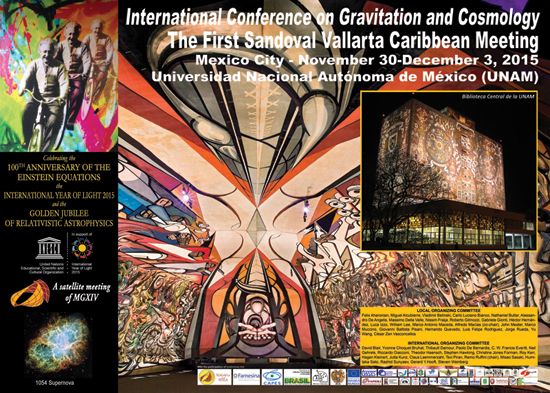
Città del Messico (Messico) – 30 novembre – 3 dicembre, 2015

La conferenza ha celebrato dal 30 novembre al 3 dicembre 2015 il centennale delle equazioni di Einstein ed ha incoraggiato future attività scientifiche dell'ICRANet in Messico. Tenutosi dopo l'MGXIV meeting a Roma in luglio 2015, ha incluso attività osservative nei raggi X, gamma, e nei raggi cosmici ad altissime energie (UHECR), progressi teorici nell'astrofisica relativistica delle stelle di neutroni, dei buchi neri, delle onde gravitazionali e nella cosmologia, così come nello sviluppo del Centro Dati Scientifico Brasiliano (BSDC): da sorgenti galattiche ed extragalattiche ed indietro nel tempo fino alla comparsa delle prime strutture nel nostro Universo. Sono stati esaminati temi quali lo stato attuale e le prospettive della partecipazione messicana nei progetti dell'ICRANet, all'interno del programma IRAP PhD e EMJD, i post-doc associati e la presenza di capi gruppo di ricerca con esperienza all'interno dei Centri ICRANet.
Il Comitato Organizzativo Internazionale è presieduto da R. Ruffini, ICRANet
Il Comitato Organizzativo Locale è co-presieduto da Alfredo Macías, UAM
La pagina web page del meeting è: http://www.icranet.org/1sv/
Il meeting in Messico è stato descritto anche nel Research Italy resource: https://www.researchitaly.it/innovitalia/eventi/icranet-in-messico-conferenza-su-gravitazione-e-cosmologia/
Il Comitato Organizzativo Internazionale è presieduto da R. Ruffini, ICRANet
Il Comitato Organizzativo Locale è co-presieduto da Alfredo Macías, UAM
La pagina web page del meeting è: http://www.icranet.org/1sv/
Il meeting in Messico è stato descritto anche nel Research Italy resource: https://www.researchitaly.it/innovitalia/eventi/icranet-in-messico-conferenza-su-gravitazione-e-cosmologia/
Nuove discussioni di Tesi di Ph.D e Diplomi
Maxime Enderli, "Binary Progenitors of GRBs in the Fireshell Model", defended on 9th December, 2015 at the University of Rome "la Sapienza"
Commission members: Antonio Capone (University of Rome "la Sapienza"), Massimo Della Valle (INAF Capodimonte Observatory), Luigi Stella (INAF Rome Observatory)
Commission members: Antonio Capone (University of Rome "la Sapienza"), Massimo Della Valle (INAF Capodimonte Observatory), Luigi Stella (INAF Rome Observatory)
The works presented in this thesis share a common scope. Each of them plays a part in the establishment of a new classification of gamma-ray bursts based on results obtained with the alternative fireshell model. Due to the extreme nature of GRBs, it is noteworthy that a better understanding of these phenomena may yield important developments in the fields of relativistic astrophysics and cosmology.
According to the classification that we obtain, all GRBs – short and long, energetic and less energetic – are outcomes of binary interactions. The binary nature of short and long GRBs nevertheless differs significantly. Indeed, short GRBs are understood as binary compact object mergers while long GRBs are viewed as the products of the interactions of a neutron star and an evolved stellar core undergoing a supernova explosion. Specifically, we report on the following results:
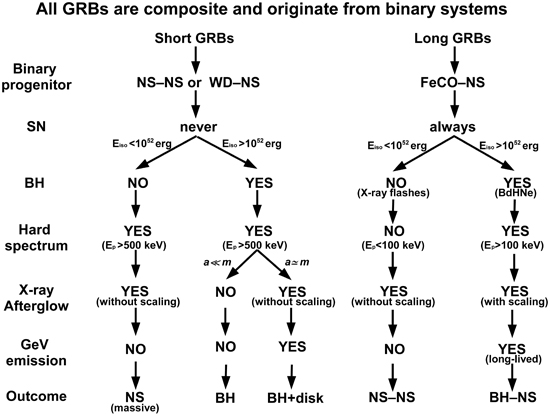
The introduction of the Induced Gravitational Collapse paradigm leads to the idea of binary GRB progenitors. This paradigm applies to energetic long GRBs associated to supernovae, and stems from the identification of physically different episodes in the γ-ray observations of several GRBs. The sequence of events in an IGC event (also referred to as a binary-driven hypernova) is detailed, and we characterize each of the four episodes that we identify. In the IGC framework, the first episode is due to the onset of a supernova and to the accretion of the ejecta onto a companion neutron star. The second episode is produced by the collapse of this neutron star to a black hole. The third episode, which encompasses emission from the SN ejecta, the SN shock breakout, and the new neutron star remnant of the supernova, appears to follow a regular behavior: the lightcurves of the late X-ray emission show evidence for overlapping and nesting features. Finally, the fourth episode consists of the supernova peak optical signal. We also report on a work that aims at characterizing IGC events through an analysis of their joint X-ray and optical spectral energy distributions.
These initial results are expanded to several remarkable GRBs to which we apply the IGC paradigm. Thus the cases of GRB 130427A – a very energetic yet relatively nearby event –, of GRB 090423 – the farthest GRB with a spectroscopic redshift to date –, and of GRB 970828 are summarized.
In addition to the study of the long GRB population, the understanding of short GRBs is improved through the analysis of energetic short events. The prototypical GRB 090227B serves as a model for the cases of GRB 140619B and GRB 090510, which are understood as binary neutron star mergers leading to the formation of black holes. In particular, GRB 090510 bears remarkable peculiarities that we interpret in the framework of the fireshell model; these peculiarities lead us to conclude that the newborn black hole may be endowed with a high spin. An important feature of the fireshell model is its energy source: originally, electromagnetic energy extraction from a Kerr-Newman black hole was considered and found to be able to deliver up to 1055 erg in a few seconds for a 10 solar mass black hole. Thus, whether gravitational collapse to a black hole occurs or not is of paramount importance regarding the energetics of a GRB. As a consequence of this dichotomy, both short and long GRBs are further divided in two families characterized by the formation – or lack thereof – of a black hole during the course of a GRB. The classification scheme of GRBs that we obtain may be summarized by the figure.
List of publications:
1. Ruffini, R.; Muccino, M.; Bianco, C. L.; Enderli, M.; Izzo, L.; Kovacevic, M.; Penacchioni, A. V.; Pisani, G. B.; Rueda, J. A.; Wang, Y., “On binary-driven hypernovae and their nested late X-ray emission”, 2014, A&A , 565, L10;
2. Ruffini, R.; Izzo, L.; Muccino, M.; Pisani, G. B.; Rueda, J. A.; Wang, Y.; Barbarino, C.; Bianco, C. L.; Enderli, M.; Kovacevic, M., “Induced gravitational collapse at extreme cosmological distances: the case of GRB 090423”, 2014, A&A, 569, A39;
3. Kovacevic, M.; Izzo, L.; Wang, Y.; Muccino, M.; Della Valle, M.; Amati, L.; Barbarino, C.; Enderli, M.; Pisani, G. B.; Li, L., “A search for Fermi bursts associated to supernovae and their frequency of occurrence”, 2014, A&A, 569, A180;
4. Ruffini, R.; Wang, Y.; Enderli, M.; Kovacevic, M.; Bianco, C. L.; Muccino, M.; Penacchioni, A. V.; Pisani, G. B.; Rueda, J. A., “GRB 130427A and SN 2013cq: A Multi-wavelength Analysis of an Induced Gravitational Collapse Event”, 2015, ApJ, 798, 10;
5. Ruffini, R.; Muccino, M.; Kovacevic, M.; Oliveira, F. G.; Rueda, J. A.; Bianco, C. L.; Enderli, M.; Penacchioni, A. V.; Pisani, G. B.; Wang, Y., “GRB 140619B: a short GRB from a binary neutron star merger leading to black hole formation”, 2015, ApJ, 808, 190;
6. Ruffini, R.; Izzo, L.; Muccino, M.; Rueda, J. A.; Barbarino, C.; Bianco, C. L.; Dereli, H.; Enderli, M.; Penacchioni, A. V.; Pisani, G. B.; Wang, Y., “Induced Gravitational Collapse in the BATSE era: the case of GRB 970828”, 2015, Astronomy Reports, 59, 626;
7. Enderli, M.; Ruffini, R.; Aimuratov, Y.; Bianco, C. L.; Kovacevic, M.; Moradi, R.; Muccino, M.; Penacchioni, A. V.; Pisani, G. B.; Rueda, J. A.; Wang, Y., “GRB 090510: a genuine short-GRB from a binary neutron star coalescing into a Kerr-Newman black hole”, submitted to ApJ.
According to the classification that we obtain, all GRBs – short and long, energetic and less energetic – are outcomes of binary interactions. The binary nature of short and long GRBs nevertheless differs significantly. Indeed, short GRBs are understood as binary compact object mergers while long GRBs are viewed as the products of the interactions of a neutron star and an evolved stellar core undergoing a supernova explosion. Specifically, we report on the following results:

The introduction of the Induced Gravitational Collapse paradigm leads to the idea of binary GRB progenitors. This paradigm applies to energetic long GRBs associated to supernovae, and stems from the identification of physically different episodes in the γ-ray observations of several GRBs. The sequence of events in an IGC event (also referred to as a binary-driven hypernova) is detailed, and we characterize each of the four episodes that we identify. In the IGC framework, the first episode is due to the onset of a supernova and to the accretion of the ejecta onto a companion neutron star. The second episode is produced by the collapse of this neutron star to a black hole. The third episode, which encompasses emission from the SN ejecta, the SN shock breakout, and the new neutron star remnant of the supernova, appears to follow a regular behavior: the lightcurves of the late X-ray emission show evidence for overlapping and nesting features. Finally, the fourth episode consists of the supernova peak optical signal. We also report on a work that aims at characterizing IGC events through an analysis of their joint X-ray and optical spectral energy distributions.
These initial results are expanded to several remarkable GRBs to which we apply the IGC paradigm. Thus the cases of GRB 130427A – a very energetic yet relatively nearby event –, of GRB 090423 – the farthest GRB with a spectroscopic redshift to date –, and of GRB 970828 are summarized.
In addition to the study of the long GRB population, the understanding of short GRBs is improved through the analysis of energetic short events. The prototypical GRB 090227B serves as a model for the cases of GRB 140619B and GRB 090510, which are understood as binary neutron star mergers leading to the formation of black holes. In particular, GRB 090510 bears remarkable peculiarities that we interpret in the framework of the fireshell model; these peculiarities lead us to conclude that the newborn black hole may be endowed with a high spin. An important feature of the fireshell model is its energy source: originally, electromagnetic energy extraction from a Kerr-Newman black hole was considered and found to be able to deliver up to 1055 erg in a few seconds for a 10 solar mass black hole. Thus, whether gravitational collapse to a black hole occurs or not is of paramount importance regarding the energetics of a GRB. As a consequence of this dichotomy, both short and long GRBs are further divided in two families characterized by the formation – or lack thereof – of a black hole during the course of a GRB. The classification scheme of GRBs that we obtain may be summarized by the figure.
List of publications:
1. Ruffini, R.; Muccino, M.; Bianco, C. L.; Enderli, M.; Izzo, L.; Kovacevic, M.; Penacchioni, A. V.; Pisani, G. B.; Rueda, J. A.; Wang, Y., “On binary-driven hypernovae and their nested late X-ray emission”, 2014, A&A , 565, L10;
2. Ruffini, R.; Izzo, L.; Muccino, M.; Pisani, G. B.; Rueda, J. A.; Wang, Y.; Barbarino, C.; Bianco, C. L.; Enderli, M.; Kovacevic, M., “Induced gravitational collapse at extreme cosmological distances: the case of GRB 090423”, 2014, A&A, 569, A39;
3. Kovacevic, M.; Izzo, L.; Wang, Y.; Muccino, M.; Della Valle, M.; Amati, L.; Barbarino, C.; Enderli, M.; Pisani, G. B.; Li, L., “A search for Fermi bursts associated to supernovae and their frequency of occurrence”, 2014, A&A, 569, A180;
4. Ruffini, R.; Wang, Y.; Enderli, M.; Kovacevic, M.; Bianco, C. L.; Muccino, M.; Penacchioni, A. V.; Pisani, G. B.; Rueda, J. A., “GRB 130427A and SN 2013cq: A Multi-wavelength Analysis of an Induced Gravitational Collapse Event”, 2015, ApJ, 798, 10;
5. Ruffini, R.; Muccino, M.; Kovacevic, M.; Oliveira, F. G.; Rueda, J. A.; Bianco, C. L.; Enderli, M.; Penacchioni, A. V.; Pisani, G. B.; Wang, Y., “GRB 140619B: a short GRB from a binary neutron star merger leading to black hole formation”, 2015, ApJ, 808, 190;
6. Ruffini, R.; Izzo, L.; Muccino, M.; Rueda, J. A.; Barbarino, C.; Bianco, C. L.; Dereli, H.; Enderli, M.; Penacchioni, A. V.; Pisani, G. B.; Wang, Y., “Induced Gravitational Collapse in the BATSE era: the case of GRB 970828”, 2015, Astronomy Reports, 59, 626;
7. Enderli, M.; Ruffini, R.; Aimuratov, Y.; Bianco, C. L.; Kovacevic, M.; Moradi, R.; Muccino, M.; Penacchioni, A. V.; Pisani, G. B.; Rueda, J. A.; Wang, Y., “GRB 090510: a genuine short-GRB from a binary neutron star coalescing into a Kerr-Newman black hole”, submitted to ApJ.
Eckhard Strobel, "Critical and overcritical electromagnetic fields", defended on 13th January 2016 at University of Rome "Sapienza"
Commission members: Fabio Sciarrino (Sapienza University), Ralf Schützhold (Universität Duisburg-Essen), Holger Gies (Friedrich-Schiller-Universität Jena)
Commission members: Fabio Sciarrino (Sapienza University), Ralf Schützhold (Universität Duisburg-Essen), Holger Gies (Friedrich-Schiller-Universität Jena)
We semiclassically investigate Schwinger pair production for two component electric fields depending on time.
To do so we solve the Dirac equation for two-component fields using a scattering ansatz inspired a Wentzel–Kramers–Brillouin approximation. Studying the same fields using the world-line instanton approach we find that the methods agree.
In general the results show that for two-component fields the spin distribution of produced pairs is generally not 1:1.
As a result the pair creation rates of spinor and scalar QED are different even for one pair of turning points. For rotating electric fields, the pair creation rate is dominated by particles with a specificspin depending on the sense of rotation for a certain range of pulse lengths and frequencies. We present an analytical solution for the momentum spectrum of the constant rotating field.

Figure 1. Total particle number per Compton volume of the rotating Sauter pulse for different pulse parameters. The dotted lines show the results of the DHW method. We find that the results agree in an intermediate range of the pulse length τ depending on the number of rotations σ. For small τ the semiclassical approximation breaks down, whereas for long pulses the DHW method is limited by errors in the numerical integration.
We also present a comparison to a method based upon the real-time Dirac--Heisenberg--Wigner (DHW) formalism for pulsed rotating electric fields. For the semiclassical method we propose to either perform numerical calculations or an additional approximation based on an analytical solution for the constant rotating field. We find that both numerical methods are complementary with respect tocomputation time as well as accuracy. The approximate method shows the same qualitative features while being computationally much faster.
In addition we study the fermionic Schwinger effect in two-dimensional de Sitter spacetime. For the constant electric field solutions for the Dirac equation can be found and the number of pairs can be computed using the standard Bogoliubov method. The solutions are used to compute the expectation value of the induced current. Comparing these results to similar studies for bosons, we find that while the results agree in the semiclassical limit, they do not generally agree. In particular, there is no occurrence of a strong current for small electric fields.
Furthermore, we generalize the result that for vanishing electric or magnetic fields the strong-field behavior of the one-loop Euler-Heisenberg effective Lagrangian of quantum electro dynamics is logarithmic for different limits of the Lorentz invariants. The logarithmic dependence can be interpreted as a lowest-order manifestation of an anomalous power behavior of the effective Lagrangian of QED, with critical exponents δ=e2/(12π) for spinor QED, and δS=δ/4 for scalar QED.
The thesis is based on following publications: 1) Alexander Blinne and Eckhard Strobel "Comparison of semiclassical and Wigner function methods in pair production in rotating fields", accepted for puplication in Phys. Rev. D (2016),
2) Clément Stahl, Eckhard Strobel, and She-Sheng Xue. "Semiclassical fermion pair creation in de Sitter spacetime", Phys. Rev. D 93 (2016) 025004
3) Eckhard Strobel and She-Sheng Xue, "Semiclassical pair production rate for rotating electric fields", Phys. Rev. D 91 (2015) 045016
4) Eckhard Strobel and She-Sheng Xue. "Semiclassical pair production rate for time-dependent electrical fields with more than one component: WKB-approach and world-line instantons", Nucl. Phys. B 886 (2014) 1153--1176
5) Hagen Kleinert, Eckhard Strobel, and She-Sheng Xue. "Fractional effective action at strong electromagnetic fields", Phys. Rev. D 88 (2013) 025049.
To do so we solve the Dirac equation for two-component fields using a scattering ansatz inspired a Wentzel–Kramers–Brillouin approximation. Studying the same fields using the world-line instanton approach we find that the methods agree.
In general the results show that for two-component fields the spin distribution of produced pairs is generally not 1:1.
As a result the pair creation rates of spinor and scalar QED are different even for one pair of turning points. For rotating electric fields, the pair creation rate is dominated by particles with a specificspin depending on the sense of rotation for a certain range of pulse lengths and frequencies. We present an analytical solution for the momentum spectrum of the constant rotating field.

Figure 1. Total particle number per Compton volume of the rotating Sauter pulse for different pulse parameters. The dotted lines show the results of the DHW method. We find that the results agree in an intermediate range of the pulse length τ depending on the number of rotations σ. For small τ the semiclassical approximation breaks down, whereas for long pulses the DHW method is limited by errors in the numerical integration.
We also present a comparison to a method based upon the real-time Dirac--Heisenberg--Wigner (DHW) formalism for pulsed rotating electric fields. For the semiclassical method we propose to either perform numerical calculations or an additional approximation based on an analytical solution for the constant rotating field. We find that both numerical methods are complementary with respect tocomputation time as well as accuracy. The approximate method shows the same qualitative features while being computationally much faster.
In addition we study the fermionic Schwinger effect in two-dimensional de Sitter spacetime. For the constant electric field solutions for the Dirac equation can be found and the number of pairs can be computed using the standard Bogoliubov method. The solutions are used to compute the expectation value of the induced current. Comparing these results to similar studies for bosons, we find that while the results agree in the semiclassical limit, they do not generally agree. In particular, there is no occurrence of a strong current for small electric fields.
Furthermore, we generalize the result that for vanishing electric or magnetic fields the strong-field behavior of the one-loop Euler-Heisenberg effective Lagrangian of quantum electro dynamics is logarithmic for different limits of the Lorentz invariants. The logarithmic dependence can be interpreted as a lowest-order manifestation of an anomalous power behavior of the effective Lagrangian of QED, with critical exponents δ=e2/(12π) for spinor QED, and δS=δ/4 for scalar QED.
The thesis is based on following publications: 1) Alexander Blinne and Eckhard Strobel "Comparison of semiclassical and Wigner function methods in pair production in rotating fields", accepted for puplication in Phys. Rev. D (2016),
2) Clément Stahl, Eckhard Strobel, and She-Sheng Xue. "Semiclassical fermion pair creation in de Sitter spacetime", Phys. Rev. D 93 (2016) 025004
3) Eckhard Strobel and She-Sheng Xue, "Semiclassical pair production rate for rotating electric fields", Phys. Rev. D 91 (2015) 045016
4) Eckhard Strobel and She-Sheng Xue. "Semiclassical pair production rate for time-dependent electrical fields with more than one component: WKB-approach and world-line instantons", Nucl. Phys. B 886 (2014) 1153--1176
5) Hagen Kleinert, Eckhard Strobel, and She-Sheng Xue. "Fractional effective action at strong electromagnetic fields", Phys. Rev. D 88 (2013) 025049.
Nuovi studenti del programma IRAP PhD
I seguenti studenti sono stati ammessi con due borse sponsorizzate dall'Università di Roma "La Sapienza" (in ordine alfabetico):
-) Melon Fuksman Julio David (Argentina)
-) Primorac Daria (Croatia)
I seguenti studenti sono stati ammessi con borse fornite dai programmi internazionali (in ordine alfabetico):
-) Almonacid Guerrero William Alexander (Colombia)
-) Gardai Collodel Lucas (Brazil/Hungary)
-) Gutierrez Saavedra Julian Steven (Colombia)
-) Isidoro dos Santos Júnior Samuel (Brazil)
-) Meira Lindolfo (Brazil)
-) Silva de Araujo Sadovski Guilherme (Brazil)
-) Uribe Suárez Juan David (Colombia)
-) Vieira Lobato Ronaldo (Brazil)
-) Melon Fuksman Julio David (Argentina)
-) Primorac Daria (Croatia)
I seguenti studenti sono stati ammessi con borse fornite dai programmi internazionali (in ordine alfabetico):
-) Almonacid Guerrero William Alexander (Colombia)
-) Gardai Collodel Lucas (Brazil/Hungary)
-) Gutierrez Saavedra Julian Steven (Colombia)
-) Isidoro dos Santos Júnior Samuel (Brazil)
-) Meira Lindolfo (Brazil)
-) Silva de Araujo Sadovski Guilherme (Brazil)
-) Uribe Suárez Juan David (Colombia)
-) Vieira Lobato Ronaldo (Brazil)
Proceedings recenti
|
I proceeding del GX4 Meeting
I proceedings dell'International Conference on Gravitation and Cosmology/ il quarto Galileo-Xu Guangqi meeting tenuto a Pechino – China il 4-8 maggio, 2015 sono stati pubblicati su uno speciale dell'International Journal of Modern Physics A, Volume: 30, Numero: 28n29 (20 ottobre 2015) — 100th Anniversary of Albert Einstein's Presentation of the General Theory of Relativity; Guest Editors: R.-G. Cai, R. Ruffini and Y.-L. Wu, si veda: http://www.worldscientific.com/toc/ijmpa/30/28n29 |
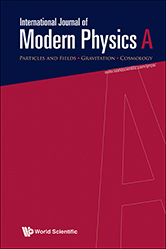 |
|
I proceedings del 2CL Meeting
I proceedings del secondo César Lattes Meeting tenuto a Rio de Janeiro - Niterói - João Pessoa - Recife - Fortaleza, Brasile, dal 13 al 22 aprile, 2015 sono stati pubblicati in AIP Conference Proceedings Series, Vol. 1693 (Editors: Ulisses Barres de Almeida, Pascal Chardonnet, Rodrigo Picanco Negreiros, Jorge Rueda, Remo Ruffini, Gregory Vereshchagin and César Zen Vasconcellos), 2015, si veda: http://scitation.aip.org/content/aip/proceeding/aipcp/1693 Si invita a visionare anche la lezione del Prof. Ruffini: http://www.icranet.org/documents/lecture_brasilia.pdf |
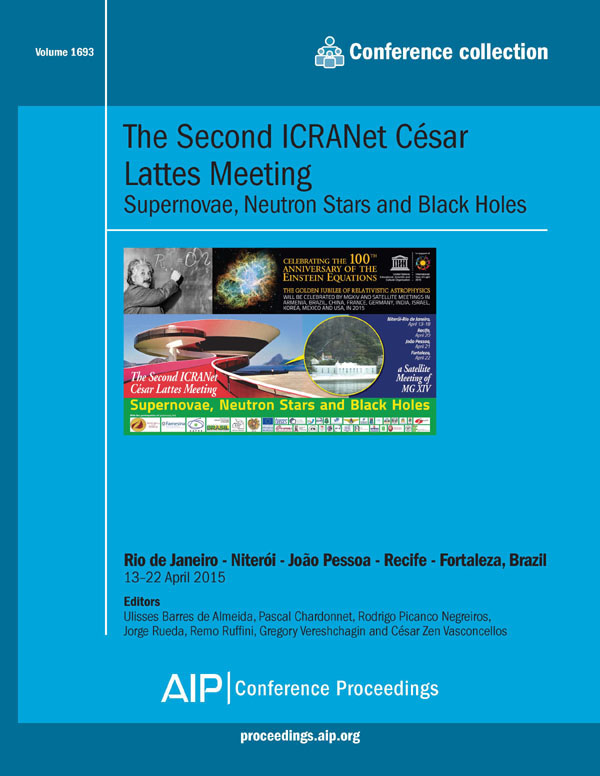 |